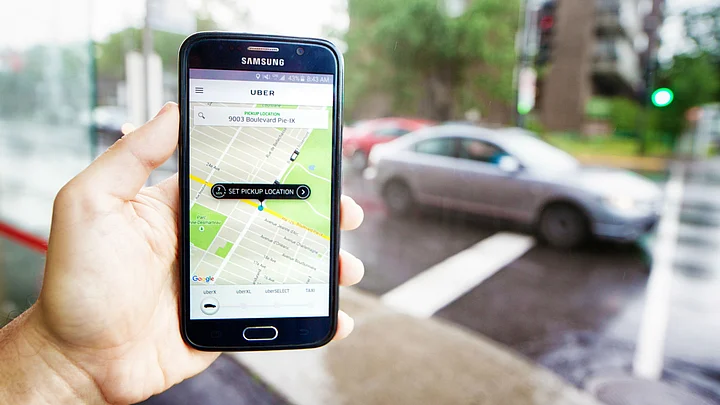The curious timing of Uber CEO Dara Khosrowshahi’s first visit to India didn’t certainly go unnoticed. Especially when you manage a bulk of media interviews, a fireside chat and an hour-long session on shared mobility – all within your two-day visit to the country.
But more importantly, it was interesting to see Khosrowshahi being pretty much clear that an Uber-OIa merger is not on the cards, at least for now. Putting the detractors off, Khosrowshahi stressed that “we’ll be investing aggressively in India for years to come and work on building a sustainable business.”
All this will be broadly highlighted in most mainstream publications on Friday morning. Which is why I am going to focus on what Khosrowshahi said about Uber’s plans for India, which doesn’t revolve around electric vehicles or its ambitious flying taxis.
Instead, Dara and Co want to develop Uber from being a cab-sharing platform, to a car-sharing mechanism in the country. Fair enough, but we heard very little about their actual plan in this regard which calls for some critical questions.
Uber recently has claimed it has over 300,000 drivers on its network in India, and if you consider the number was around 250,000 not that long ago, then the increase in drivers is directly leading to additional cars on the road.
But Khosrowshahi highlighted the ‘congestion’ part repeatedly, so hopefully, Uber will put that into practice and focus on reducing the strain of vehicular traffic in India.
However, Uber seems interested in entering the electric vehicle space in India, for which they are willing to partner with the government, who just a few days back, decided to make a full u-turn on its EV policy roll out.
Other than being a cab-sharing entity, Khosrowshahi believes that with products like Uber Moto, Uber Eats and Uber Auto, the brand can expand its reach beyond the top metros, something which could help its cause.
Currently, Uber Moto is available in limited parts of Delhi-NCR, while Uber Auto never managed to take off. It’ll be interesting to see if their learning brings about a different approach for both these products.
But then again, it’s quite evident that Khosrowshahi’s dream to have Uber serving India in the same vein as other countries can be achieved, only if our existing transportation ecosystem gets a complete overhaul. Which, I am afraid, is very unlikely to happen in a country where Maruti and Hyundai sells thousands of models in a single month on a consistent basis.
Talking about presence of women at Uber, Dara strangely pointed that Uber is slowly bringing gender parity into its culture. Other global products like Express Pool, which was introduced recently in the US, is likely to make its debut in India, not anytime soon though.
He clearly feels that Uber in India needs to move on from its current business model and focus on becoming a person to person (P2P) car sharing model. This way, Dara believes, Uber won’t have to train drivers, and needing them to be as full-time employees.
Without divulging much on the business/revenue front of the company, Dara quashed away all rumours by saying “Uber is right on track with its 2019 IPO plans.”
(The Quint, in association with BitGiving, has launched a crowdfunding campaign for an 8-month-old who was raped in Delhi on 28 January 2018. The baby girl, who we will refer to as 'Chhutki', was allegedly raped by her 28-year-old cousin when her parents were away. She has been discharged from AIIMS hospital after undergoing three surgeries, but needs more medical treatment in order to heal completely. Her parents hail from a low-income group and have stopped going to work so that they can take care of the baby. You can help cover Chhutki's medical expenses and secure her future. Every little bit counts. Click here to donate.)
(At The Quint, we question everything. Play an active role in shaping our journalism by becoming a member today.)
